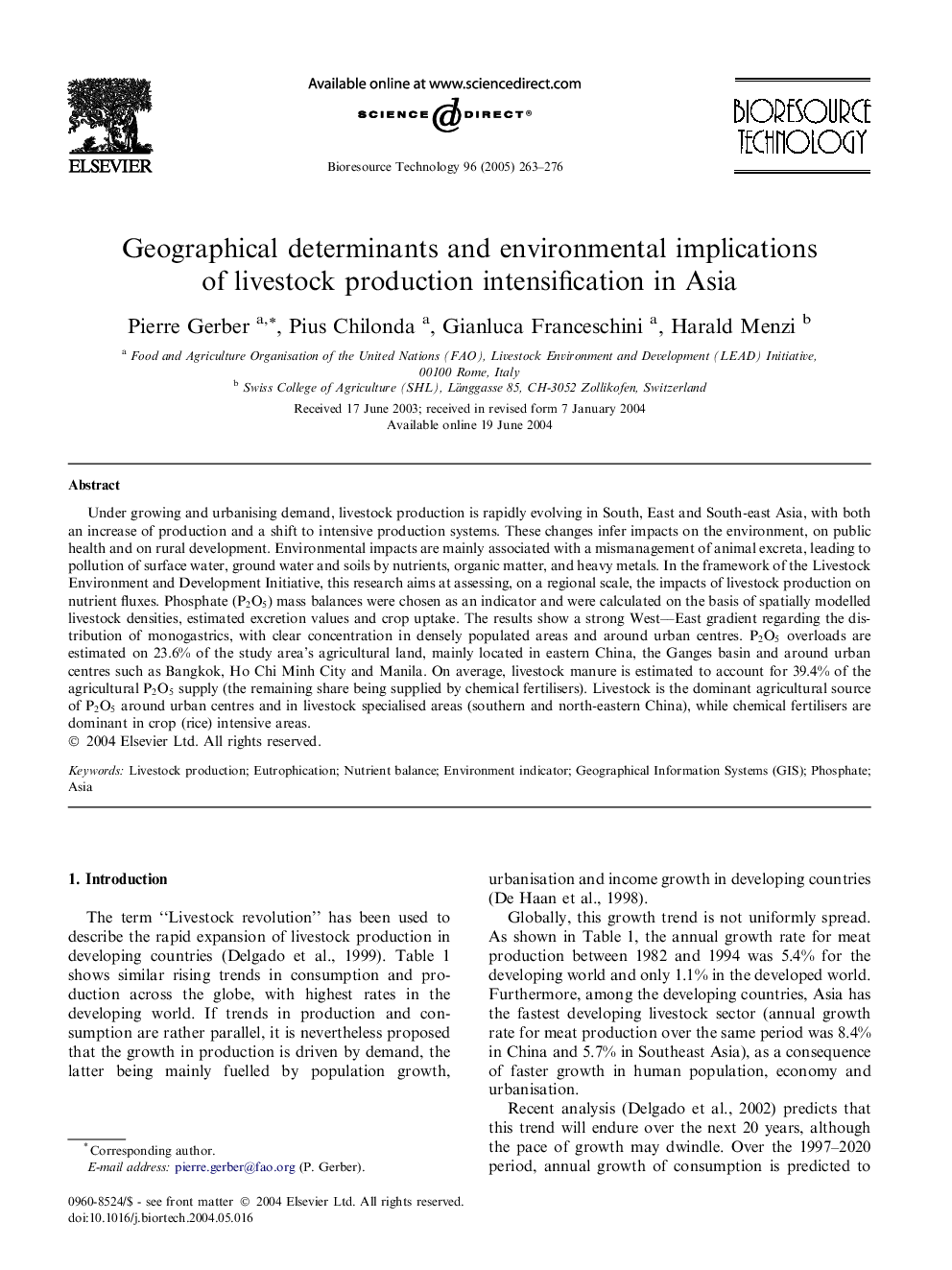| Article ID | Journal | Published Year | Pages | File Type |
|---|---|---|---|---|
| 10395825 | Bioresource Technology | 2005 | 14 Pages |
Abstract
Under growing and urbanising demand, livestock production is rapidly evolving in South, East and South-east Asia, with both an increase of production and a shift to intensive production systems. These changes infer impacts on the environment, on public health and on rural development. Environmental impacts are mainly associated with a mismanagement of animal excreta, leading to pollution of surface water, ground water and soils by nutrients, organic matter, and heavy metals. In the framework of the Livestock Environment and Development Initiative, this research aims at assessing, on a regional scale, the impacts of livestock production on nutrient fluxes. Phosphate (P2O5) mass balances were chosen as an indicator and were calculated on the basis of spatially modelled livestock densities, estimated excretion values and crop uptake. The results show a strong West--East gradient regarding the distribution of monogastrics, with clear concentration in densely populated areas and around urban centres. P2O5 overloads are estimated on 23.6% of the study area's agricultural land, mainly located in eastern China, the Ganges basin and around urban centres such as Bangkok, Ho Chi Minh City and Manila. On average, livestock manure is estimated to account for 39.4% of the agricultural P2O5 supply (the remaining share being supplied by chemical fertilisers). Livestock is the dominant agricultural source of P2O5 around urban centres and in livestock specialised areas (southern and north-eastern China), while chemical fertilisers are dominant in crop (rice) intensive areas.
Keywords
Related Topics
Physical Sciences and Engineering
Chemical Engineering
Process Chemistry and Technology
Authors
Pierre Gerber, Pius Chilonda, Gianluca Franceschini, Harald Menzi,
